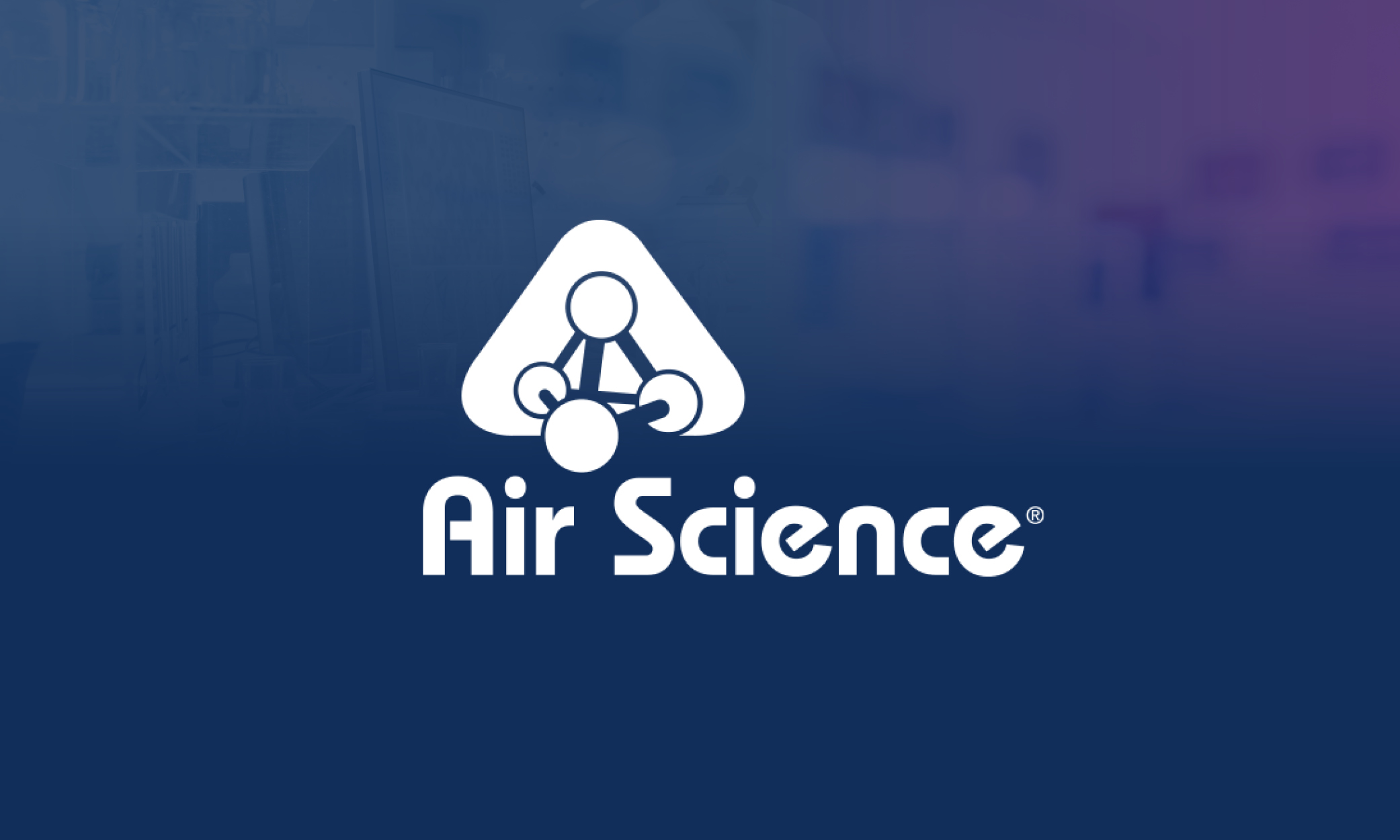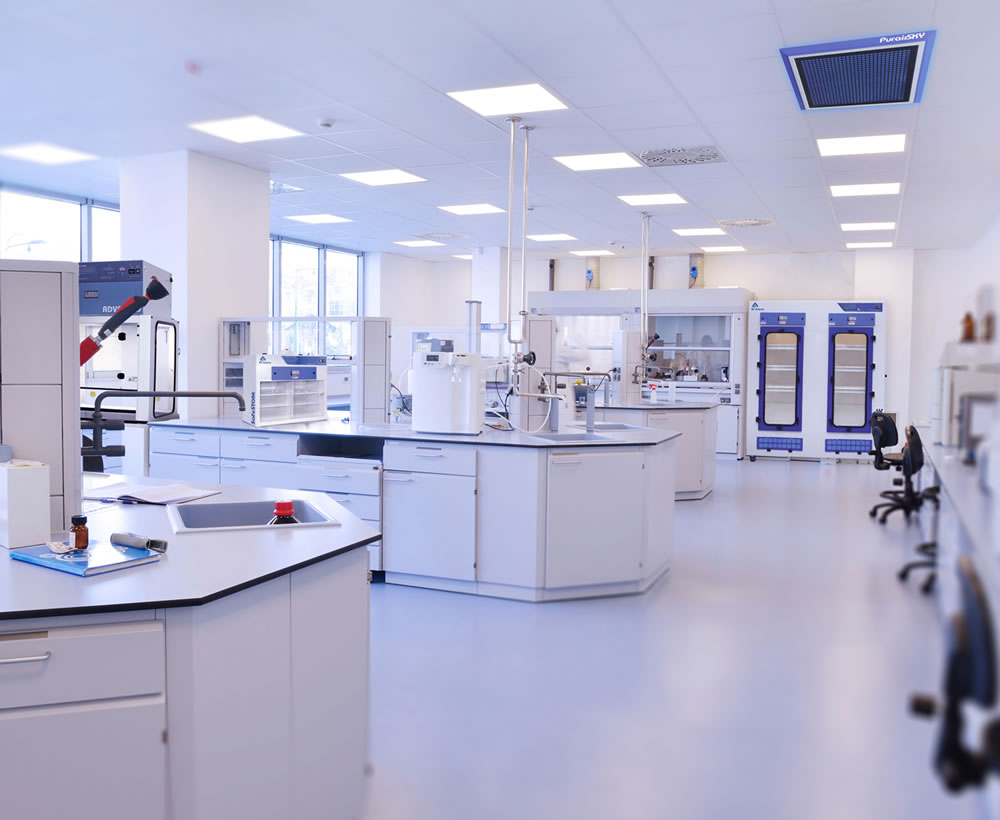
Choosing the correct equipment for your laboratory filtration solutions is critical when it comes to operating a safe, efficient, effective laboratory. Ductless fume hoods, laminar flow hoods and biological safety cabinets are all designed to meet the needs of highly specific, extremely diverse situations. Understanding which hood is right for your laboratory takes experience and an intricate knowledge of the science behind laboratory filtration. Harm may occur to the operator, process or environment if incorrect laboratory filtration products are used for incorrect applications.
The Air Science® Laboratory Desk Reference guides you through the benefits and limitations of each type of laboratory filtration device for specific applications, with the goal of creating a safe laboratory environment using equipment that is efficient in operation and effective in process. Before equipment selection, it is important to evaluate your needs and define your goals, so you can select the right equipment for the personnel, process and working environment.
Ductless Fume Hoods
Offering safety and flexibility, ductless fume hoods are designed to provide operator and environmental protection from vapors and, with optional HEPA filtration, particulates. The ductless fume hood is available in multiple configurations to meet the diverse application needs and space requirements of today’s laboratories. Continuous airflow across the work surface draws contamination away from the user and through a multi-stage carbon filter, recycling clean air back into your laboratory. Applications for ductless fume hoods exist in many markets, including pharmaceutical compounding, forensics, veterinary, dental work and histology. Some industrial processes and medical device manufacturing processes may also be enclosed in ductless fume hoods.
Ductless fume hoods are stand-alone units that can easily be moved anywhere in the laboratory, eliminating the costs of construction, additional ductwork and utilities. Offering a relatively small overall operational footprint, the ductless fume hood can be configured to meet the specific needs of many applications, with filter options available to accommodate chemicals and concentrations from a large number of chemical families. Limited amounts of different chemicals should be used in relatively low volumes and at low exposure times to maximize the life of your filters and the effectiveness of your hood.
Most ductless fume hoods are designed to protect the operator from exposure to chemicals, which in turn does not protect the process from outside contamination. If your process is susceptible to contamination from outside sources, other options, such as isolators or laminar flow hoods, are likely more appropriate choices of protection. Some ductless fume hoods are designed for occasional light-duty use or process specific applications, and no extreme heating or corrosive reactions should be carried out in these hoods.
Purair® Basic is compact and ideal for use in laboratory environments where space is limited or where only small volumes of harmful substances are handled. It is ideal for a variety of applications, including compounding and forensics.
Purair Advanced ductless fume hoods and chemical processing workstations are available in a variety of standard models, useful in pharmaceutical, research and medical laboratories.
Laminar Flow Hoods
Laminar flow hoods, available in both horizontal and vertical flow, provide protection for the product and the laboratory process by producing a constant, unidirectional airflow across the work surface, incorporating design elements to minimize air turbulence and dead zones while removing particulate matter that may affect results. Laminar flow hoods are best suited for applications that need to protect the process from particulate contamination. Common applications include microbiological testing, cell cultures, clinical/medical testing, medical device production and semiconductor protocols.
The laminar flow hood is engineered to minimize contamination, as air passes through a HEPA filter, then uniformly through the cabinet interior to protect the work from unfiltered air. Employing the exclusive Air Science MultiplexTM HEPA filtration technology, the airflow is oriented to exhaust airborne particulates introduced by the user to sustain a contamination-free environment. Laminar flow hoods are designed for desktop use or may be installed on an optional base stand or mobile cart.
Horizontal laminar flow hoods are best for applications that require less turbulence on the work surface as the airflow does not hit any obstruction until exiting the fume hood. Horizontal laminar flow is also best for applications with primarily small utensils and equipment that will not cause airflow disturbance. Those applications require superior contamination control should use horizontal flow since hands and gloves are positioned downstream of the sample during normal operation.
Vertical laminar flow hoods perform best in applications requiring the use of large equipment on the work surface, as vertical airflow produces less turbulence when hitting large items within the airflow. Vertical laminar flow also provides a taller, larger work space because the filters are generally positioned on top of the hoods.
Laminar flow hoods should only be used when handling non-hazardous powders or nuisance odors generated on the work surface, and should not be used for applications requiring soldering fumes or harmful powders.
Purair Laminar Flow Hoods are a series of high-efficiency products designed to protect equipment and other contents of the work zone from particulates. They are ideally suited for use with non-hazardous contaminants and when flexible access to the equipment in the work zone is desired.
Purair PCR laminar flow cabinets employ the Air Science Multiplex HEPA filtration technology to create a safe, energy-efficient contaminant-free environment, perfect for use during PCR amplification to guard against non-hazardous contaminants.
Biological Safety Cabinets
Biological Safety Cabinets are designed to protect the user and the environment from a variety of biological particulates, as well as maintain product and process integrity. Class II Type A2 biosafety cabinets contain Biosafety Level 1-3 agents by maintaining negative pressure inside the cabinet during operation to prevent contaminants from escaping the work area, ideal for life science researchers, various biological protocols and for sterile product preparation in a number of industries. Dual HEPA filtration protects the operator and samples, with 70% of the contaminated air flowing through the supply HEPA and back into the work zone, while the remaining 30% exiting through the exhaust HEPA into the room.
Offering simple installation, the biosafety cabinet is self-contained and does not require venting to the outside. Units are portable and may be moved within the laboratory with minimal downtime and without filter changes. Because filtered air is returned to the room, no demands are required of the facility HVAC capacity for make-up air, and construction and ductwork costs are eliminated.
Biological safety cabinets are not designed to protect users or product and samples from hazardous vapors or gases.
Purair BIO is a Class II Type A2 biosafety cabinet which minimizes and contains Biosafety Level 1-3 agents, maintaining negative pressure to provide multiple levels of protection and user-friendly operation.